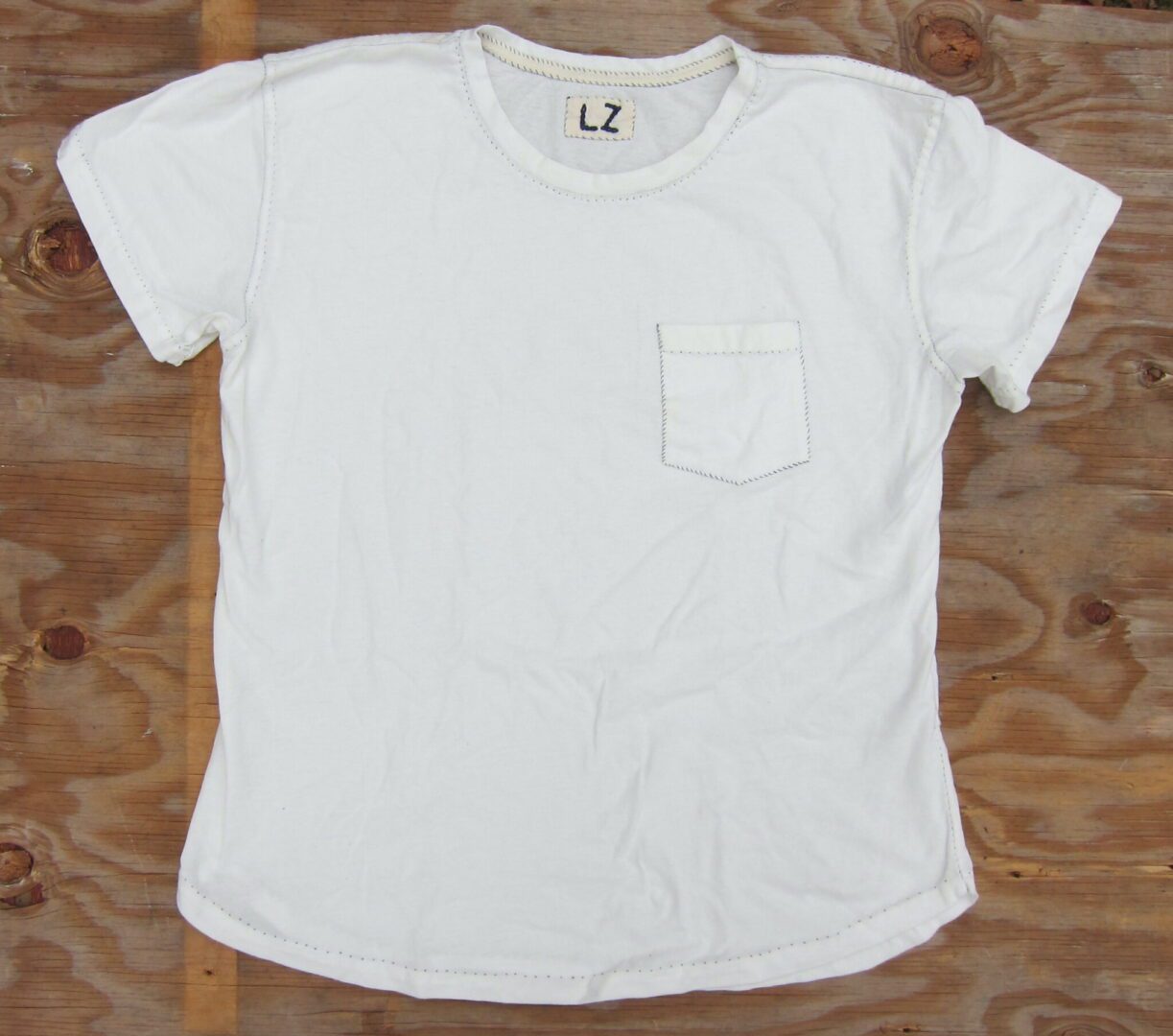
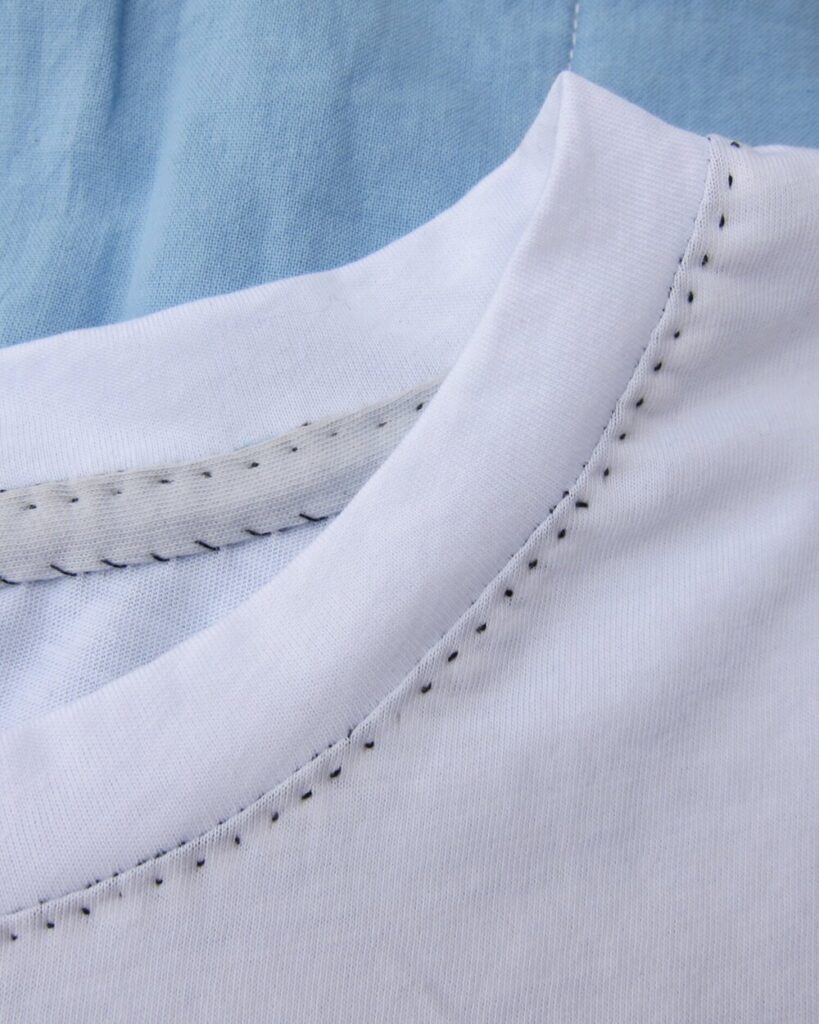
We all know the comfort of a t-shirt. T-shirts are everywhere, available at both low and high price points, and they clothe laborers and executives alike. Stretchy, humble, hardworking — there is much to recommend these common garments. Many of us live our lives in them. Yet they are produced in such massive volume, and at such speed, that they are often viewed as disposable. And despite the skillful human hands that cut and sew these t-shirts, the labor is deeply underpaid. Indeed, there is an important opportunity to dignify the humble t-shirt, and to dignify the work of creating one — however, wherever, and by whomever it is made.
In this class, we will not overlook the simple t-shirt. Instead, over the course of three weeks, participants will gradually, mindfully build t-shirts with their hands, one slow hand stitch at a time. No sewing machines will be used. Guided by teacher Louisa Owen Sonstroem, students will use light- or midweight jersey to investigate the stitches and other techniques useful for hand sewing with knits. Various options for customization and individual decision-making will be explored along the way.
The basic techniques offered will focus on creation of a slightly drop-shoulder t-shirt style, with flat-sewn sleeves and an easy fit through the torso. The neckline will feature a traditional knit neckband. Participants will learn multiple ways to hand sew seams on knit garments, and multiple ways to finish seam allowance edges. This class is an excellent primer in hand sewing with knit fabrics. After completing the class, students will be ready to hand sew many other stretchy garments, including dresses, tank tops, sweatshirts, leggings, bathing suits, and more.
Join us in this celebration of hand sewing, and of the dignity of everyday clothing. Let us find preciousness in the humble t-shirt. Let us delight in the quiet workings of our hands.
The course will take place over three sessions, and will consist of:
- several pre-class videos to help students customize and prepare their sewing patterns, and to cut them out of the fabric (or you can draft your own by attending the T-shirt Patternmaking class!)
- three live, virtual classes with Louisa
- access to a private platform group for questions and sharing
Please note that hand sewing is a slow experience. Class time will include accelerated demonstrations, but there will also be some slow stitching work. You will need to do lots of stitching outside of class time if you wish to complete your t-shirt. Also, there will be several hours of prep work to do before the first class. Louisa’s pre-class videos will walk you through this work, but you will need to set aside time for it.
Dates
Saturdays, June 4th, 11th, and 25th
Time
11am – 1:30pm ET
Location
Zoom, a link will be sent to participants
the day before class.
Cost
$300
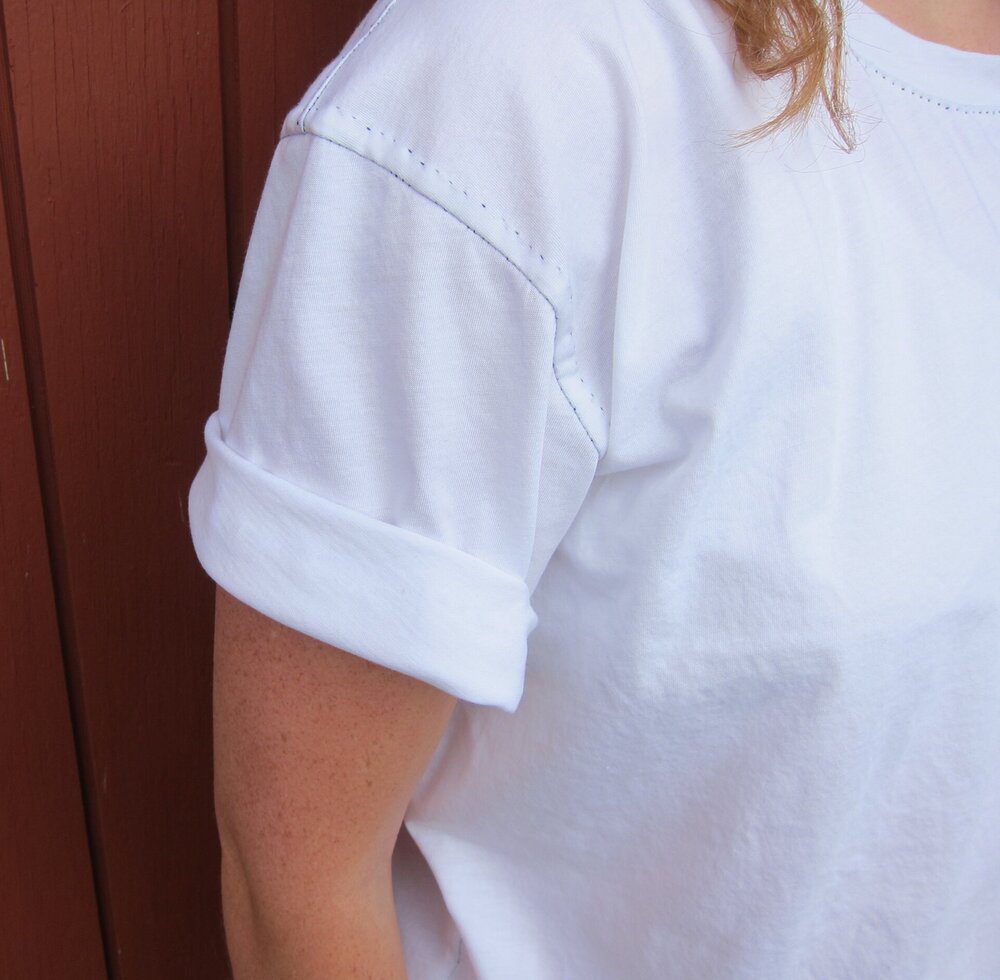
CLASS MATERIALS
- A t-shirt pattern. Louisa recommends the free, PDF-downloadable Stellan Tee from French Navy, which features a high crew neck and easy fit. Other good free downloadable options include the flowy-hemmed Plantain Tee from Deer and Doe and the menswear-oriented Sage Tee by Elbe Textiles. Muna and Broad’s Tarlee T-Shirt, though not free, is an excellent option with a great extended size range. Alternatively, you can sign up for Louisa’s t-shirt patternmaking class, which runs the month before our hand-sewing course, and learn to draft your own custom-fit t-shirt pattern.
- At least two yards of light- to midweight jersey fabric. The fiber content is up to you. Cotton is usually soft and breathable; linen jersey and rayon jersey have excellent drape; other fibers will work as well.
- Matching thread suitable for your fabric. All-cotton mercerized thread is a good option, but other threads will work as well. Whatever you have on hand will be good.
- Ballpoint hand sewing needle. Examples: https://www.amazon.com/Singer-Point-Assorted-Needles-10-Count/dp/B002PQEZ3K and https://www.amazon.com/Dritz-10-Piece-Ball-Point-Needles/dp/B005573G3Q
- Sewing shears.
- Marking tool of some sort. This could be a water-soluble pencil or marker, hera marker, or even a plain 2B pencil.
- Ruler (clear, gridded, 2” x 18” ruler is my favorite, but any will work).
- Tape measure.
- Iron and ironing board.
- Extra fine straight pins. (Size 20, 1 ¼” long, are good, but use what you can find.) Fine pins will be gentler on dense jersey fabrics than standard width pins.
- A few 4” x 4” swatches of your garment fabric. We’ll use these to practice stitches.
- Paper scissors for cutting out pattern pieces.
- Clear tape for assembling paper pattern pieces.
- Scrap paper and a sharpened pencil for any pattern corrections you may wish to do.
- A few heavy objects (soup cans, rocks, dumbbells are all fine) to use as pattern weights.
- Optional: thimble, thread snips, cake of wax or other thread conditioner.
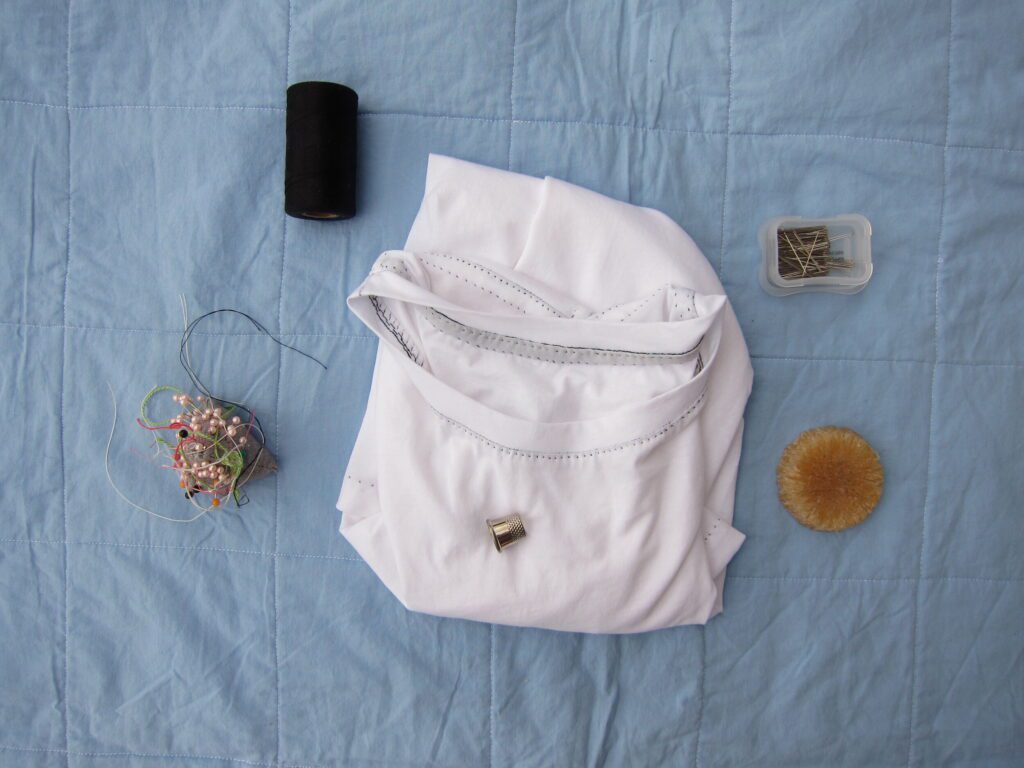
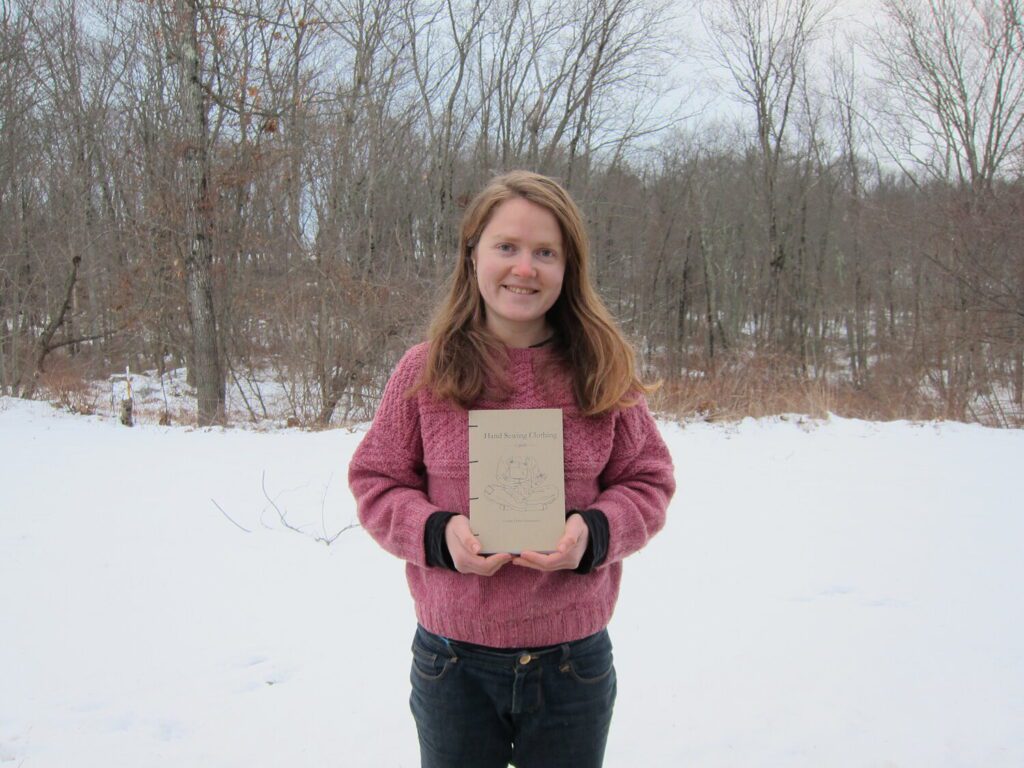
OUR TEACHER
Louisa Owen Sonstroem
Louisa Owen Sonstroem believes there is little more powerful than working with one’s hands, because manual skills are empowering, enduring, and slow. Whether she is drafting sewing patterns with a pencil and paper, hand-sewing “slow fashion” clothing, or foraging wild plant fibers to spin on a drop spindle, Louisa relishes using primitive tools in sophisticated ways.
Louisa holds a B.A. from the University of Connecticut and an additional degree from the Fashion Institute of Technology, where she studied patternmaking and fashion design. She also studied patterns at RISD and MassArt. She has worked in the garment industry for several years, most recently in technical design at Macy’s and now Eileen Fisher. During her time at Macy’s she also ran a weekly employee mending workshop, building skills, community, and sustainable momentum.
You can find Louisa on Instagram @louisaowensonstroem
